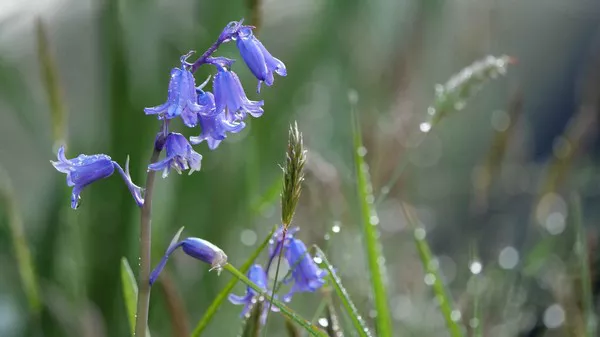Gardens are havens of beauty and tranquility, where vibrant flowers bloom in a splendid display of colors. However, the harmony of these floral landscapes can be disrupted when unwelcome visitors take center stage. Gardeners often find themselves grappling with the question, “What bug is eating my flowers?” This article delves into the world of garden pests, their impact on flowers, and effective strategies for pest management.
The Intruders Among Us: Common Garden Pests
Garden pests encompass a diverse array of insects and organisms that feast on the leaves, stems, and blooms of plants. Some of the most common culprits include aphids, caterpillars, slugs, snails, and beetles. These insects not only diminish the aesthetic value of a garden but can also compromise the health and vitality of plants, leading to reduced growth and diminished flowering.
Detective Work: Identifying the Culprit
The first step in addressing the issue of pests devouring your flowers is identifying the pest responsible for the damage. Different pests leave distinct marks on plants, aiding in their identification. Aphids, for instance, cause curled and distorted leaves, while caterpillars leave behind jagged and irregular holes. By carefully examining the type of damage, gardeners can narrow down the list of potential pests.
1. Aphids: The Tiny Menace
Aphids, those minuscule insects that often cluster on the undersides of leaves, are among the most prevalent garden pests. They use their needle-like mouthparts to suck sap from plants, weakening them and causing leaves to curl. Their rapid reproduction can lead to infestations, affecting multiple plants in a short span of time.
2. Caterpillars: Nature’s Hungry Caterers
Caterpillars are the larval stage of butterflies and moths, and while they transform into beautiful pollinators, their feeding habits can wreak havoc on your flowers. They have voracious appetites and can quickly devour leaves and flower buds. Identifying the specific type of caterpillar is crucial, as some are harmless, while others can be quite destructive.
3. Slugs and Snails: Stealthy Night Diners
Slugs and snails are notorious for their nocturnal feasting. These slimy creatures leave behind irregular holes and silvery trails on leaves and flowers. They thrive in damp environments and can be particularly challenging to control due to their elusive nature.
4. Beetles: A Diverse Group of Pests
Beetles encompass a wide range of species, each with its own feeding preferences. Japanese beetles, for example, feed on a variety of plants, skeletonizing leaves in the process. Lily leaf beetles, on the other hand, target lilies and can devastate entire plants.
Effective Strategies for Pest Management
1. The Bigger Picture: Understanding Pest Behavior
To effectively combat garden pests, it’s essential to understand their life cycles and behavior patterns. Many pests have specific seasons during which they are most active, making targeted intervention more effective. Additionally, recognizing the factors that attract pests, such as overwatering, lack of proper spacing, or nutrient imbalances, can help prevent infestations in the first place.
2. Integrated Pest Management: A Holistic Approach
Integrated Pest Management (IPM) is a comprehensive strategy that focuses on minimizing the use of chemical pesticides and instead relies on a combination of techniques. These techniques include cultural practices like proper watering and planting, biological controls such as introducing natural predators, and, if necessary, the selective use of chemical treatments. IPM aims to strike a balance between pest control and environmental sustainability.
3. Natural Allies: Beneficial Insects
In the intricate web of garden ecosystems, not all insects are foes. Beneficial insects, such as ladybugs, lacewings, and parasitic wasps, can play a pivotal role in controlling pest populations. These insects prey on garden pests, effectively acting as natural allies in maintaining a healthy garden.
4. Organic Approaches: Keeping Pests at Bay Naturally
For gardeners who prefer an organic approach to pest control, there are various methods to explore. Neem oil, derived from the neem tree, is a natural insecticide that disrupts the life cycle of pests. Horticultural soaps, made from plant-based materials, can also be effective in controlling aphids and mites. Additionally, introducing companion plants that repel pests, such as marigolds and chrysanthemums, can contribute to a pest-resistant garden.
5. Vigilance and Prevention: Keys to Long-Term Success
While identifying and addressing the current pest issue is crucial, preventive measures are equally important to ensure the long-term health of your garden. Regularly inspecting plants for signs of infestations, practicing proper sanitation by removing fallen leaves and debris, and employing techniques such as crop rotation can minimize the risk of recurring pest problems.
Conclusion
Maintaining a flourishing garden requires vigilance, knowledge, and a multifaceted approach to pest management. By familiarizing yourself with common garden pests, their behavior, and the available control methods, you can effectively protect your flowers from unwanted intruders. Remember, striking a balance between pest control and the preservation of the garden’s ecosystem is key to creating a harmonious and thriving floral landscape.


